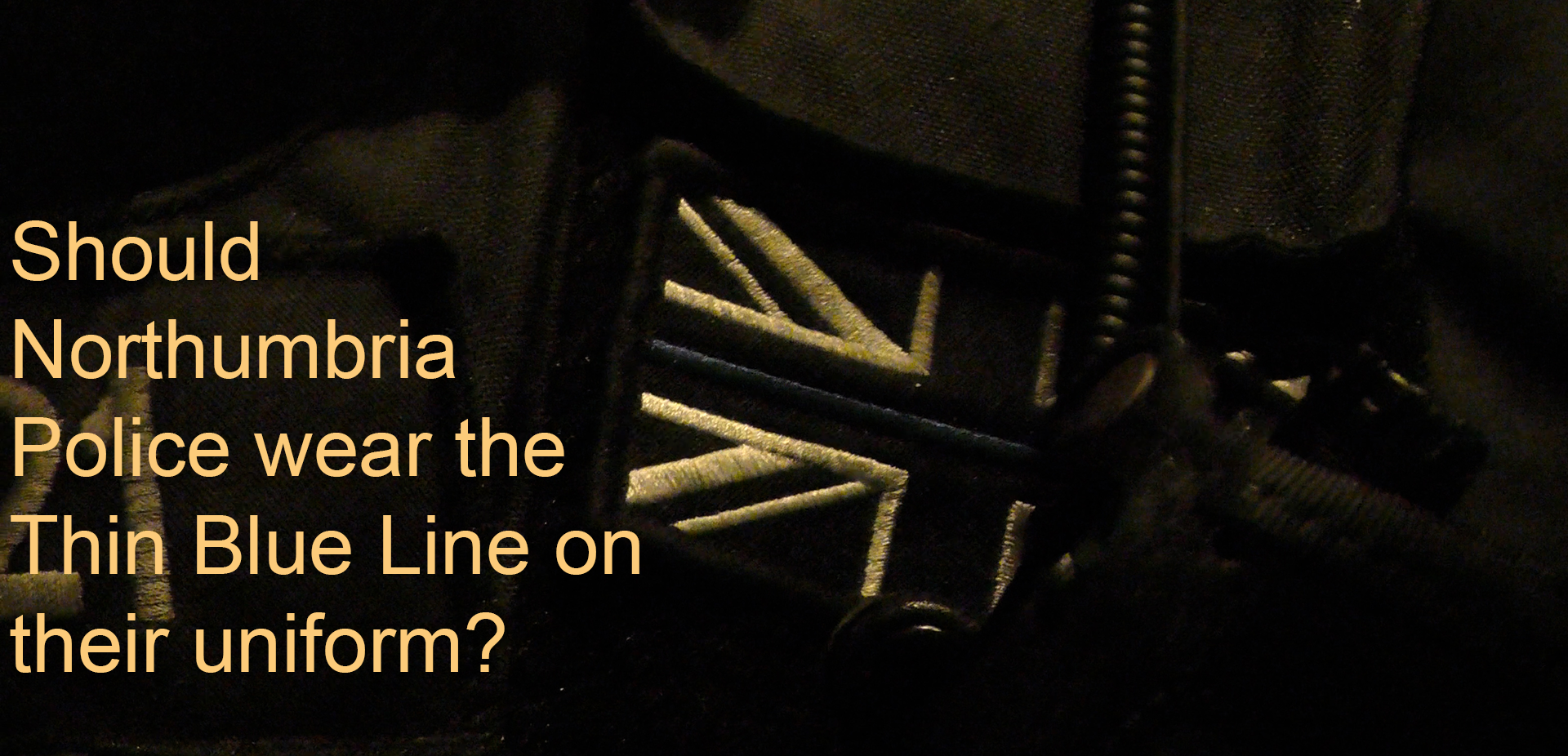Members of Northumbria Police patrol wearing ‘problematic’ Blue Lives Matter patch

Please read this disclosure of the academic context behind this piece.
A number of Northumbria Police officers have been seen patrolling within the city centre wearing patches on their uniforms featuring a black-and-white version of the Union Flag, with a blue line superimposed horizontally across the middle.

The Thin Blue Line symbol, which originated in the UK but was popularised in the US, was said to have been originally adopted to represent the ‘thin’ barrier the police force represented between civilisation and lawlessness. Superimposing the thin blue line over a national flag may have preceded Blue Lives Matter, but has since been used as the symbol for the movement.
It is the image’s close association with what has been seen to be a counter-movement to Black Lives Matter, as well as representing lack of accountability within the police force, that has seen the symbol condemned and criticised by activists.
When asked invited to take part in an interview or to send across responses to written questions, a spokesperson for Northumbria Police responded, declining to take part. However they did assert that the badge was worn ‘just in support of policing in general and not a “blue lives matter” statement.’
‘Officers across the country wear these and it’s just a matter of personal choice, so not one for us to comment on.’
This statement would appear at odds with a Freedom of Information request made of Northumbria Police in January 2020. In this request, Northumbria Police were asked if the wearing of the ‘blue line badges’ was permitted on police uniforms. Northumbria Police responded, saying ‘Police Officers are only permitted to wear Police Uniform with official police insignia. The wearing of charity badges may be permitted with prior permission.’
When the previous spokesperson who had responded to the request for an invitation were asked about this, and whether this then meant the symbol had been officially permitted by Northumbria Police for their officers, a different spokesperson replied to simply repeat the previous statement and provide no further comments. They equally declined to acknowledge questions regarding clarity of intent of Northumbria Police in wearing the badge within the context of its various historical usages.

While b-roll was being collected for the video component of this piece, two Northumbria Police officers wearing the symbol, who did not identify themselves but were wearing the numbers of Z-21 and Z-06, approached, and on being informed of the journalistic intent of the filming, described their belief for wearing the patch on their uniform as representing their role in ‘the difference between good and evil’. They stated this was their interpretation of it, rather than wearing it as a ‘symbol of oppression’, and they would continue to wear it as ‘it means something to [them]’. Both officers declined to discuss the subject beyond these comments.
The symbol continues to be involved in incidents of controversy, particularly in the United States – including its presence at white supremacist rallies. In 2015, a Sussex police constable was told to remove his patch by his superior.
Just as the Black Lives Matter movement propagated to British activism following its origin in America, and the increase in popularity of members of the police in wearing the Thin Blue Line over the national flag, it could be we will also soon see the symbol form a more firm connection with racist movements domestically that may require police forces across the country to take a more firm stance one way or another on associating with the symbol.
Disclosure: This journalistic piece was produced as the assessment for the MCH8055 Multimedia Journalism 1: Newsgathering Production and Dissemination module as part of my MA International Multimedia Journalism at Newcastle University. The work was restricted to the following items of scope – 500 – 600 words, 90 – 120 seconds of audio and 60 – 90 seconds of video. Each different form of media had to consider a separate interview or statement with different individuals. This piece was produced whilst simultaneously working on other pieces of coursework and with a strict timeframe.
